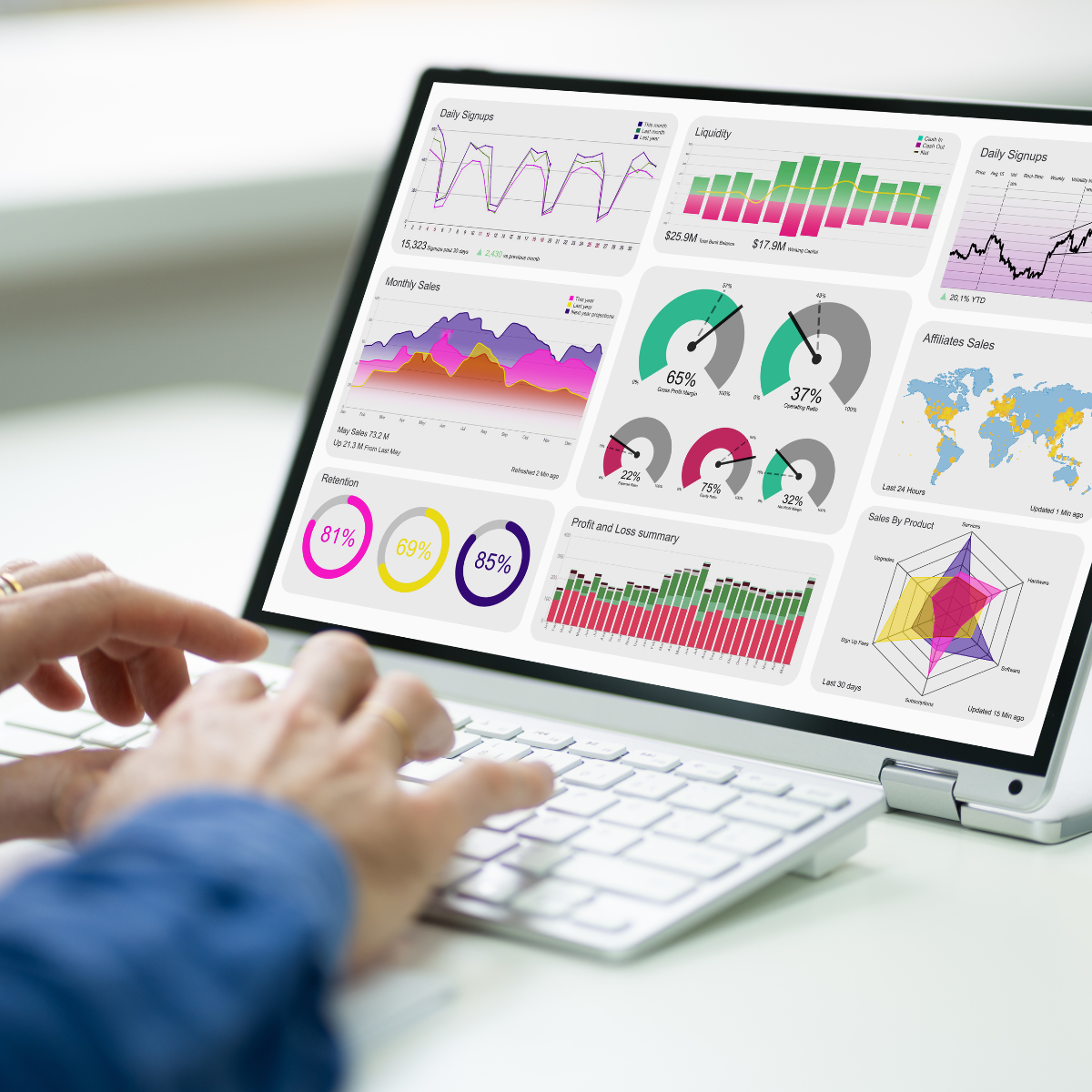The Importance of Data Analytics for Financial Services
Data Informs Every Trend and Prediction
No two days are ever the same in financial services. In an ever-changing global economy, realities change in an instant. Look no further than the news over the past couple of weeks regarding Silicon Valley Bank and others. With the growing volume and complexity of financial data, the use of data analytics has become essential for financial institutions to remain competitive and thrive in a rapidly changing landscape.
Financial institutions need the ability to make more accurate, informed decisions to reduce risk and increase profitability. By analyzing vast amounts of data in real-time, financial institutions can identify market trends, forecast future financial performance, and assess risk. The ability to quickly and accurately analyze data is essential to the very survival of the financial industry.
Furthermore, the necessity for streamlined data solutions is highlighted by the increasing reliance on technology in the industry. The rise of digital banking, mobile payments, and online investing has led to a significant increase in the amount of data generated by financial transactions. Financial institutions must be able to collect, process, and analyze this data to remain competitive and provide their customers with the best possible service.
These new sources of data don’t just introduce opportunities to better understand your customer. They also introduce new risks that must be successfully mitigated. Look at the
Silicon Valley Bank collapse, or the inflation of Gamestop stock a few years ago driven by social media. Never before have we operated in an environment where customer behavior can be so quickly and easily influenced in large volumes. Today, it is easier than ever before for customers to quickly transfer their assets to a new financial institution. These new risks highlight the need for effective analytics. Without the insight into your customer’s sentiment, your institution risks being caught totally unprepared in a tidal wave of customer movement.
The Future of Banking and Finance
The future of banking and finance will undoubtedly be shaped by the continued evolution of data and the systems designed to optimize it. The collection, processing, and analysis of information that can be used to make informed decisions is critical to understanding the economic environment from day to day. In the financial services, data analytics can be used to identify market trends, understand customer personas, and assess risk among many other functions.
The power of data in the financial services industry can drive a significant competitive advantage when utilized correctly, but an ever-increasing risk if not managed appropriately. With changes in consumer behavior and an expectation of seamlessly-integrated digital solutions, financial services providers are constantly working to keep up with the latest demands from customers and regulators. For institutions, they need systems and partners in place that provide solutions that start with the customer experience to drive and increase market and wallet share, all while working in a way that mitigates risk and satisfies regulations.
Data Informs Every Decision
Financial services rely heavily on data to inform its decision-making processes. Each and every decision made relies on a steady stream of real-time information. Without it, financial institutions would be unable to make informed and accurate decisions, such as whether to approve a loan or invest in a particular asset.
Data solutions can also help identify inefficiencies and areas for improvement in their operations. By analyzing data on internal processes and workflows, financial institutions can identify bottlenecks and inefficiencies while implementing process improvements to increase efficiency and reduce costs.
But analytics don’t just help institutions safeguard against risk and errors. Data, when synthesized and presented accurately, can help financial institutions identify opportunities for growth and expansion. Think of the customer’s journey with their bank of choice, for example. Customers can come into a branch, log-in on their mobile device, call the contact center, or send messages back and forth with a specialist through the chat function.
Customers can come into a bank location or visit an ATM to make deposits and withdrawals. They can even take their debit card wherever they go.
With so many services and options available to the client, it means that the bank has to track and accumulate data for each channel. Banks are faced with multi-channel environments with complex interactions for each customer. In order for organizations to maximize value, they need systems that use data to break down the silos, unify information, build customer personas, and make intelligent recommendations based on the customer’s journey.
Those personalized recommendations are just one vital part in an effort to provide excellent customer service. Customer data can be used to improve customer engagement and satisfaction by analyzing data on customer behavior, preferences, and feedback. Businesses can use customer data to identify opportunities for cross-selling and upselling, and personalize marketing and communication to improve customer engagement and loyalty.
Further Examples of Integration
Seamless integration of data systems are valuable for numerous aspects of the financial services. For example, credit card companies use data analytics to identify fraudulent transactions in real-time. This security not only reduces the risk of financial losses, but is a tremendous value add to the institution when stopping fraud early. There is also the reputation and peace of mind that is granted to their customers. Finally, integration provides a solution when fraud does strike, allowing for a quick resolution.
Institutions are able stay ahead of the curve by providing insights into emerging trends and technologies. Financial institutions have to constantly be evaluating emerging technologies like AI and blockchain, while not hastily overcommitting to unproven technologies. Financial Institutions are traditionally slow moving and inflexible, but the ones who can pivot quickly and quickly innovate are the ones who will own the next 25 years.
Future Forecasting and Predictions
The future of data analytics in financial services looks promising, with continued advancements in technology, increased data availability, and the rise of artificial intelligence and machine learning. These developments will enable financial institutions to provide deeper insights to their customers, further reducing risk, increasing profitability, and creating better results for their clients.
For example, we talked about the Silicon Valley Bank saga earlier. But what could SVB have done to avoid disaster? SVB likely should have looked at rising interest rates while cross-referencing their balance sheet. From this, Silicon Valley Bank needed to develop projections on when and how to liquidate assets, or pivot to raising funds to prevent a total collapse.
With billions of decisions being made every single day in finance, having the inside track for the best and most accurate data is a must-have competitive advantage. Data analytics are a necessity for firms to integrate, learn, and utilize to best service their customers, provide the best forecasting, and maximize revenue.
The benefits are clear, but finding the right organization to partner with for the ultimate solution can be cloudy. We invite you to
connect with us and schedule a consultation with our team. At Brewster Consulting Group, we ensure that your systems drive better business outcomes and create real value for your organization. To learn more about our team, subscribe to our newsletter,
Brews For Thought!
With decades of financial services experience including Risk, Regulatory, Data Governance, Analytics, Mortgage, Retail, and Commercial expertise, our team can help you. Let us help you build a data system that works for your organization that provides clarity, insight, and simplicity.
At Brewster Consulting Group, we recognize that managing data can be a daunting task for small and mid-sized enterprises. Allow us to assist you in harnessing the potential of operational intelligence! Reach out to one of our specialists today to refine your data strategy, optimize your processes, and establish solid governance. Ready to cultivate data analysis and propel scalable growth? Your journey begins right here!











